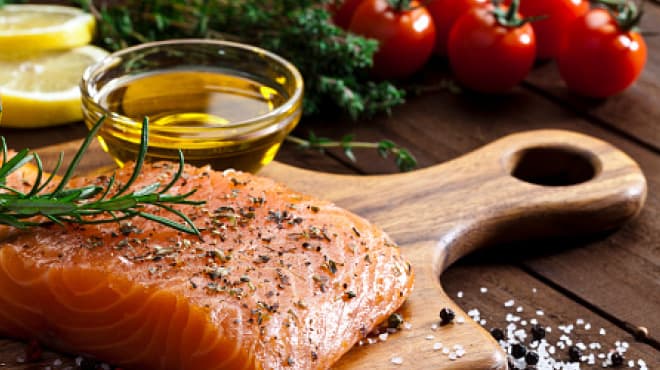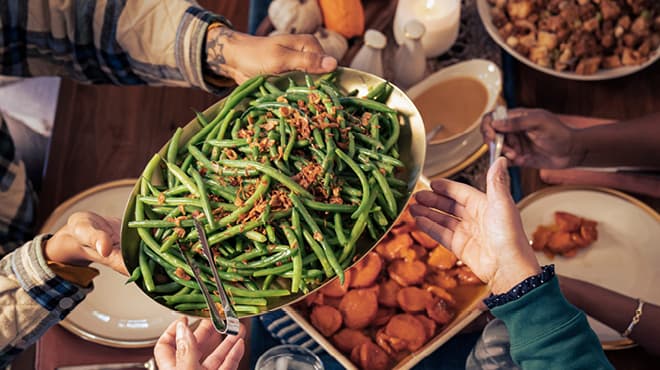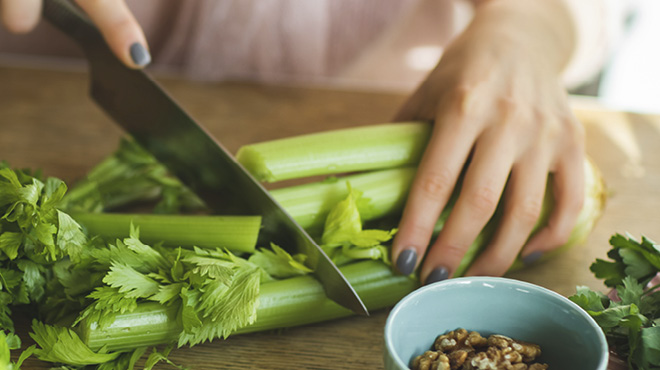Recent Posts
-

-
 Patient StoriesA lifesaver saved: An EMS veteran’s journey from rescue to recoveryNovember 14, 2025
Patient StoriesA lifesaver saved: An EMS veteran’s journey from rescue to recoveryNovember 14, 2025 -

More than stress: What you eat affects your blood pressure

High blood pressure, or hypertension, is a major risk factor for heart disease and stroke. The condition makes your heart work harder, can harden the walls of arteries and cause organ damage. What you eat affects your blood pressure. One eating plan designed to help prevent or treat high blood pressure is the Dietary Approaches to Stop Hypertension (DASH) diet.
Guidelines, not rules
The DASH diet requires no special foods and has no rigid rules. It emphasizes eating fruits, vegetables, whole grains, low-fat dairy, beans, nuts, lean meats and fish. The eating plan is rich in the minerals potassium, calcium and magnesium, which play a role in regulating blood pressure.
What the DASH diet does limit is:
- Added sugar. Enjoy sugar-sweetened beverages and sweets sparingly.
- Food high in saturated fats. Reduce your intake of fatty meats, full-fat dairy products and tropical oils like coconut and palm oils.
- Salt (sodium). The Food and Drug Administration (FDA) estimates U.S. adults consume about 3,400 milligrams of sodium a day. DASH limits salt to 2,300 milligrams per day. To reduce salt in your diet, dine out less, pare down salt in cooking, flavor foods with salt-free spices or herbs, and choose plain or minimally processed meats.
Embracing the DASH diet
Reading about an eating plan is one thing, putting it into practice is another. A basic guideline for DASH is to fill half of your plate with fruits and vegetables. The remaining half should be ¼ whole grains or complex carbohydrates and ¼ lean protein.
Here's a look at the recommended servings from each food group for a 2,000-calorie-a-day DASH diet:
- Vegetables: 4 to 5 servings a day. One serving is 1 cup raw leafy green vegetables, ½ cup cut-up raw or cooked vegetables, or ½ cup vegetable juice.
- Fruits: 4 to 5 servings a day. One serving is one medium piece of fruit, ½ cup fresh, frozen or canned fruit, or ½ cup fruit juice.
- Grains: 6 to 8 servings a day. One serving may be ½ cup of cooked cereal, rice or pasta, 1 slice of bread or 1 ounce of dry cereal.
- Lean meats, poultry and fish: Six 1-ounce servings or fewer a day. One serving is 1 ounce of cooked meat, poultry or fish, or 1 egg.
- Fat-free or low-fat dairy products: 2 to 3 servings a day. One serving is 1 cup milk or yogurt, or 1½ ounces of cheese.
- Nuts, seeds, or dry beans and peas: 4 to 5 servings a week. One serving is ⅓ cup nuts, 2 tablespoons peanut butter, 2 tablespoons seeds, or ½ cup cooked dried beans or peas, also called legumes.
- Fats and oils: 2 to 3 servings a day. One serving is 1 teaspoon soft margarine or butter, 1 teaspoon vegetable oil, 1 tablespoon mayonnaise or 2 tablespoons salad dressing.
- Sweets and added sugars: 5 servings or fewer a week. One serving is 1 tablespoon sugar, jelly or jam, ½ cup sorbet or 1 cup lemonade.
Eating well for your heart health
No foods are off-limits in the DASH eating plan. You can eat well — and deliciously — without feeling deprived.
Yellow pear and cherry tomato salad
By Mayo Clinic
Serves 6
Salad
1 ½ cups yellow pear tomatoes, halved
1 ½ cups orange cherry tomatoes, halved
1 ½ cups red cherry tomatoes, halved
4 large fresh basil leaves, cut into slender ribbons
Vinaigrette
2 tablespoons sherry vinegar or red wine vinegar
1 tablespoon minced shallot
1 tablespoon extra-virgin olive oil
¼ teaspoon salt
⅛ teaspoon freshly ground black pepper
In a small bowl, combine the vinegar and shallot and let stand for 15 minutes. Add the olive oil, salt and pepper and whisk until well blended. In a large serving bowl, toss together all the tomatoes. Pour the vinaigrette over the tomatoes, add the basil ribbons, and toss gently to mix well and coat evenly. Serve immediately.
Nutritional per 3/4-cup serving: 45 calories, 3 grams total fat, 0 grams saturated fat, 5 grams carbohydrate, 1.5 grams fiber, 125 milligrams sodium, 1.5 grams protein.
Barbecue chicken pizza
By Mayo Clinic
Serves 4
1 cup tomato sauce, no salt added
1 12-inch thin, whole-grain pizza crust
1 green pepper, cut into rings
1 tomato, sliced
1 cup mushrooms, sliced
4 ounces cooked chicken breast, sliced about 1-inch thick, with all visible fat removed
4 tablespoons barbecue sauce
1 cup shredded, reduced-fat mozzarella cheese (about 4 ounces)
Heat the oven to 400 F. Spread the sauce evenly over the pizza crust. Add the pepper, tomato, mushrooms and chicken. Drizzle barbecue sauce over the pizza and top with cheese.
Bake about 12 to 14 minutes. Cut the pizza into 8 slices and serve.
Nutritional per 2-slice serving: 261 calories, 7 grams total fat, 475 milligrams sodium, 28 grams total carbohydrate, 0 grams total sugars, 5 grams fiber, 21 grams protein.
By Mayo Clinic Health System staff.


